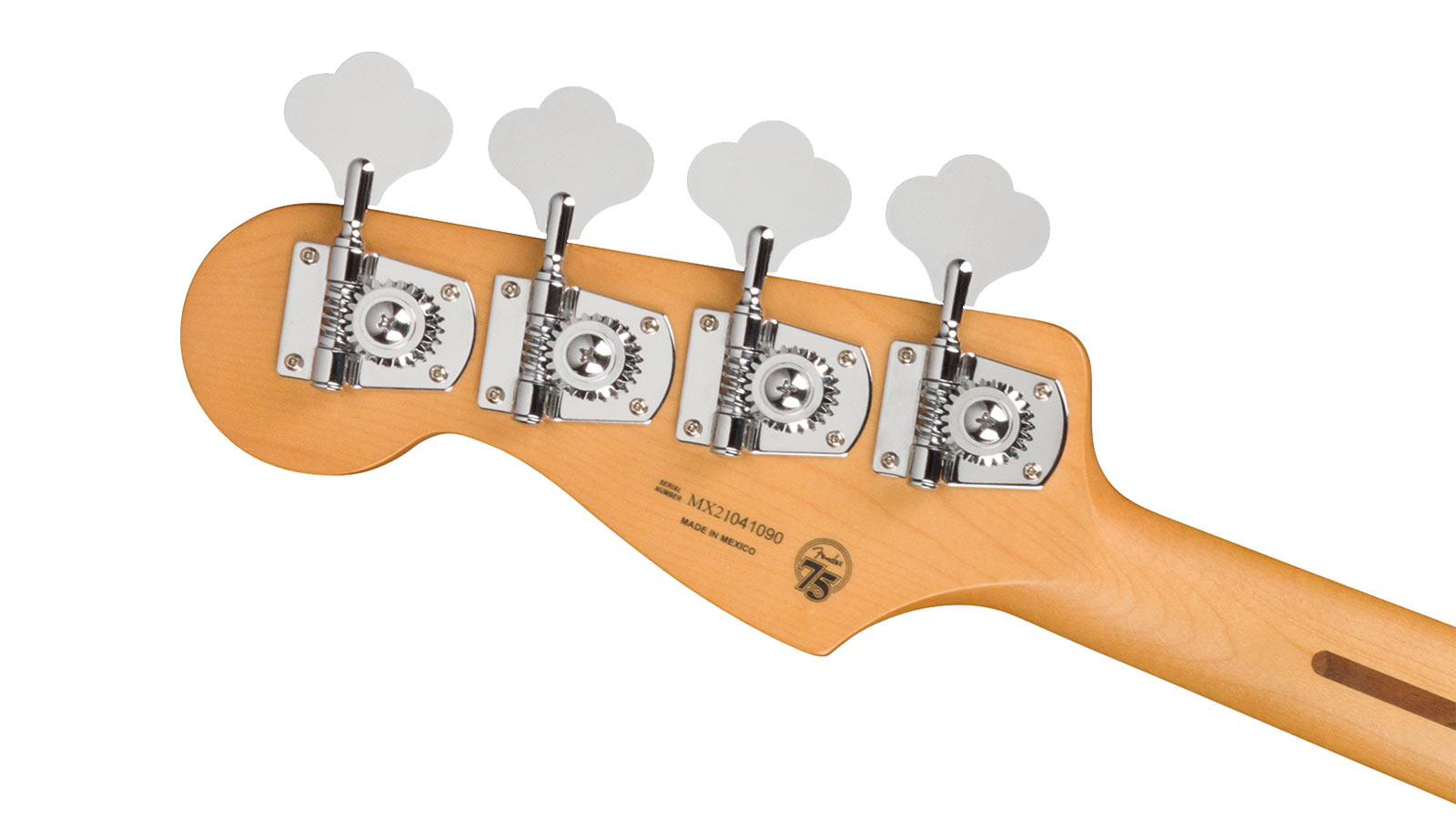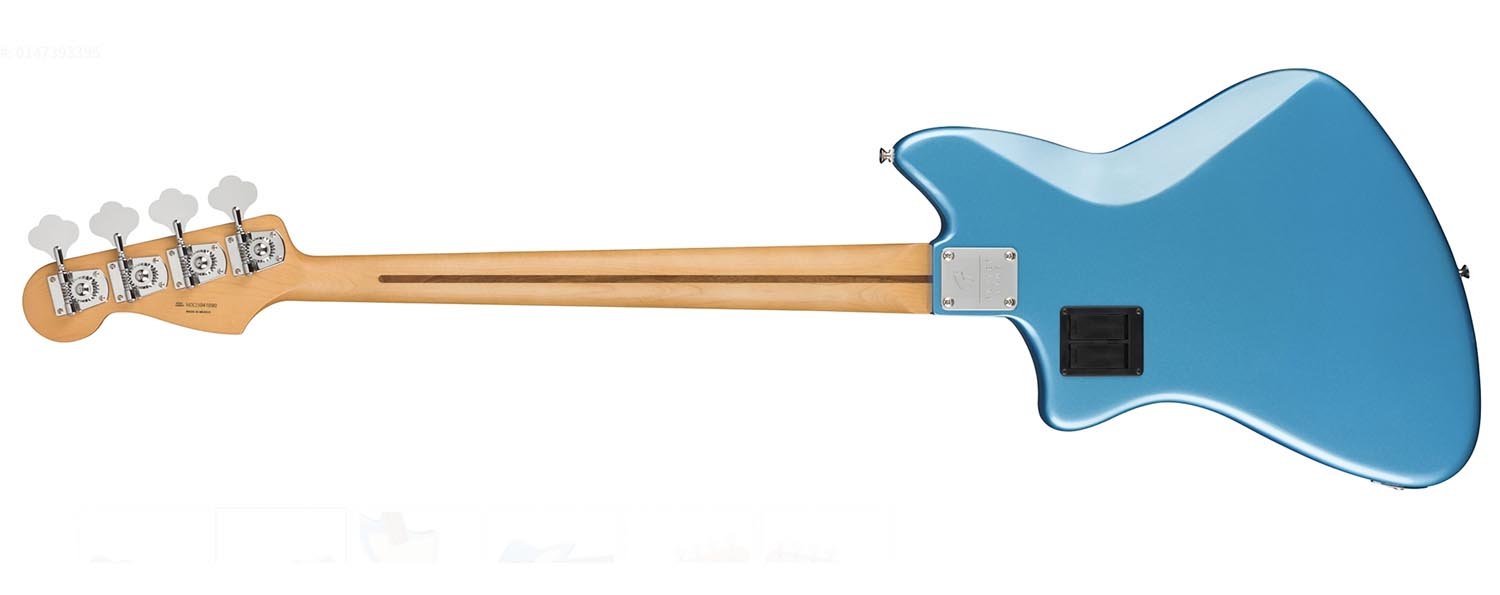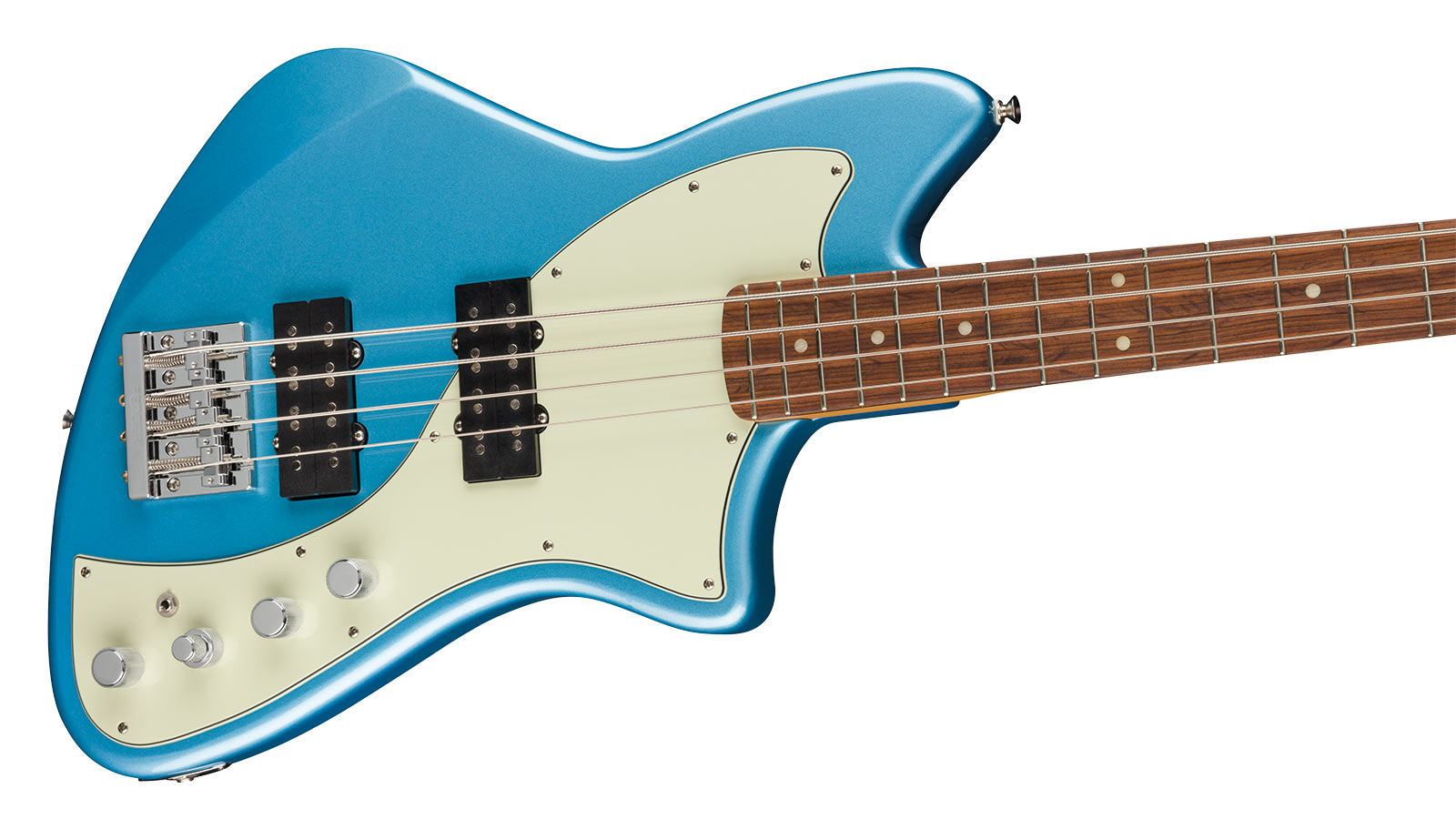Guitar World Verdict
A refreshing take on the Fender feel, but with a new edge.
Pros
- +
High-register fret access.
- +
Tones with range and power.
- +
No neck dive.
- +
Rolled fingerboard edges.
Cons
- -
Shape will deter purists.
You can trust Guitar World
Fender’s design division have obviously been having a lot of fun lately, expanding their Parallel Universe line of instruments in 2018 with the new Meteora range and adding a Custom Shop version two years later.
While that high-spec bass guitar came with an equally high price tag, this new active Meteora has been slotted into Fender’s Player Plus line of relatively affordable, high-functionality instruments, with a user cost in the low four figures.
I reviewed the Player Plus Precision a couple of issues back and was impressed, because it offered loads of tone options and playability at a reasonable price, while still being recognisably Fender-esque: Let’s see if the much more radically-shaped Meteora can match up.
Build Quality

Before we get into the literal nuts and bolts of this instrument, let me start by saying how inspiring it is to play a bass that has no neck-dive whatsoever, presumably due to its body shape. The extra mass at the back and bottom of the Meteora means that you don’t have to hold the neck up with your fretting hand. This might sound trivial, but believe me, after eight million bass reviews, you appreciate this detail.
Take a look at that body shape, then. There’s bits of Jaguar and Mustang in there, and even a hint towards the wacky Teisco instruments from the Sixties that you still see in guitar stores.
I suppose it’s weird enough to put a few people off, but once you’re actually playing the thing, it all starts to make sense, as we’ll see in a minute.
Components-wise, there’s nothing particularly out of the ordinary: Fender have stuck closely to the familiar P and J templates in more or less every way other than the body design. The body wood is alder and the neck is the expected maple; there’s a choice of pau ferro or maple fingerboard, depending on which finish you go for.
The neck feels like a blend of Precision and Jazz, without the club-like dimensions of the former and some of the slinkiness of the latter. Its finish is grippy enough for your fretting-hand thumb to feel at home, but there’s enough glide to make speedy upper-register fills doable: The rolled edges assist your playing speed, too.
Twenty medium jumbo frets remind you that yep, this is a Fender, and the hi-mass bridge and cloverleaf tuners are satisfyingly chunky, helping to give this bass a feeling of solidity.
Sounds And Playability
Where the Meteora differs noticeably from your usual P and J models is in its beefed-up electronics, in place presumably because today’s young bassists need plenty of power and tones. Two Fireball humbuckers deliver the sounds, alongside an 18-volt active preamp – with batteries in two pop-out chambers – and a three-band EQ for cut and boost.
You’re also supplied with a mini-switch to toggle between active and passive modes, and don’t forget your glasses, because ‘mini’ means exactly that in this case. A master volume and pickup selector finish off what is a very sophisticated control layout compared to the old single volume and tone of the P-Bass – a family Ford to the Meteora’s Ferrari.

Fire everything up and you’re rewarded with a lively set of tones, with tons of range and enough power to defeat more or less any stubborn band mix. The bass boost is especially monstrous, and while the top end is less violent, there’s plenty of glassy edge for you.
The mids, always a lifesaver, can be boosted to a decent level too. Here at BP we never neglect passive tones, having had a few batteries die on us over the years, so it’s a pleasure to report that the Meteora’s passive mode is just fine; not mind-blowing but definitely good enough.
One thing that is completely new about the Meteora is access to the higher frets, thanks to the lack of a lower horn
The playability of this bass is its strong suit, but then again any well set-up Fender is a joy to play. Our review model’s action is low and the strings brand new, so nippy playing is a piece of cake: There’s something about the combination of chunky neck and low action that feels both effortless and solid.
You’d expect all this at this price, of course, but one thing that is completely new about the Meteora is access to the higher frets, thanks to the lack of a lower horn. Soloists and tappers will love this, and given that the Player Plus range is perfectly tailored to YouTubers and slap enthusiasts, who – let’s face it – are often one and the same, this element of the instrument’s playability is both well-conceived and well-executed.

Conclusion
This is a great bass. Whether or not you like the body shape, you’ll enjoy the amped-up power and tone range, as well as the player-friendly feel. I have to give Fender credit: They’ve come up with a wholly appropriate concept with this ‘Player Plus’ idea – because this is essentially a Fender bass with a bit extra. Hats off to them.
Specs
- PRICE: $1199 /£979
- MADE IN: Mexico
- BODY: Alder
- NECK: Maple, 34” scale
- NECK JOIN: Bolt-on
- FRETBOARD: Pau ferro or maple, 20 frets
- PICKUPS: 2x Fender Fireball humbuckers
- CONTROLS: Volume; bass, mid and treble boost/cut; active/passive toggleswitch, pickup selector
- ELECTRONICS: 18-volt active preamp
- HARDWARE: Nickel and chrome tuners, hi-mass bridge
- WEIGHT: 9lbs
- CONTACT: Fender
Joel McIver was the Editor of Bass Player magazine from 2018 to 2022, having spent six years before that editing Bass Guitar magazine. A journalist with 25 years' experience in the music field, he's also the author of 35 books, a couple of bestsellers among them. He regularly appears on podcasts, radio and TV.
“An esoteric boutique vibe, superb ergonomics and a powerful, unique preamp – Tobias is back”: Tobias Growler IV review
“Affordable versions of the three best basses I've ever held in my hands”: Sterling by Music Man completes its trilogy of Joe Dart signature models with a trio of made-to-order basses that cost less than $500













